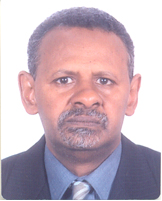Theme: Influencing issues in marine life
Marine Science 2018

Address: Embassy Suites by Hilton Dallas DFW Airport North, 2401 Bass Pro Drive, Grapevine, Texas, 76051, USA
Marine Science-2018 is providing a global platform to discuss and learn about Oceanography, Marine Sciences, Marine Biology, and Marine Geology, Marine ecology to exchange their knowledge, experience and research innovations. The aim of Marine Science-2018 Conference is to create a platform for strong exchange of the recent advancement and technologies towards Marine Life.
Conference Series LLC Ltd Organizes 1000+ Global Events inclusive of 300+ International Conferences, 500+ Workshops and 200+ Symposiums every year across USA- Europe & Asia with support from 1000 more scientific societies and publishes 400+ Open access journals which contains over 30000 eminent personalities, reputed scientists as editorial board members.
Details of Marine Science 2018 in USA:
Conference Series LLC Ltd invites all the scholars from all over the world to attend and present their respective scientific research at “6th International Conference on Marine Science, Coastal Dynamics and Management” during September 21-22, 2018 Dallas, Texas, USA which includes prompt Keynote presentations, Oral talks, Poster presentations, Delegate views and Exhibitions.
|
Conference Name |
Place |
Date |
|---|---|---|
|
Dallas, Texas, USA |
September 21-22, 2018 |
Why Dallas?
Dallas is a major city in Texas and is the largest urban center of the fourth most populous metropolitan area in the United States. The city proper ranks ninth in the U.S. and third in Texas after Houston and San Antonio. The city's prominence arose from its historical importance as a center for the oil and cotton industries, and its position along numerous railroad lines. The bulk of the city is in Dallas County, of which it is the county seat; however, sections of the city are located in Collin, Denton, Kaufman, and Rockwall counties.
Dallas is centrally located and within a four-hour flight from most North American destinations. DFW International Airport is the world's fourth busiest airport, offering nearly 1,750 flights per day and providing non-stop service to 145 domestic and 47 international destinations worldwide annually. In addition, Dallas Love Field Airport is conveniently located 10 minutes from downtown. Once here, visitors can ride DART, one of the fastest-growing light rail systems in the nation or the historic, free McKinney Avenue Trolley from the Dallas Arts District throughout the Uptown area with its restaurants, pubs, boutique hotels and shops.
Throughout the city, a visitor will enjoy the best shopping in the southwest, four-and five-diamond/star hotels and restaurants, the largest urban arts district in the nation, 14 entertainment districts and much more. Blend in moderate weather, year-round sports and true Southern hospitality for a true "taste" of the Dallas difference. Visitors are exposed to a city of success ... where optimism meets opportunity. Its pioneering spirit is alive and well, and the philanthropic contributions from its many residents continue to enrich the community and quality of life.
Why to attend?
The conference will provide a forum for exchange of recent research results with members from around the world focused on learning about oceanography research and marine biology, for discussion of future challenges in implementation and innovation of new technologies, marine pollution, marine environment and interactions and also the conference will display the latest advances in instrumentation
Marine Science forms incorporate coupling over a vast scope of scales and linkage between a quantities of components of various nature. Lately those countries have started to perceive the size, decent variety and many-sided quality of the sea businesses and their significance to all. Excessively numerous individuals’ marine equivalents shipping, which is in fact a critical industry as the world armada continues 90% of the world exchange by tonnage and shipbuilding is a business worth over U.S. $32 billion for each annum. Seaward oil and gas is the world's greatest marine industry where off generation alone can have an estimation of more than $310 billion for every annum. Submarine links are currently an immense business that gives the overall piece of the World Wide Web and empowers the very presence of the web.
Target Audience:
· Oceanographers
· Environmental Scientists
· Marine Geologist
· Fresh Water scientists
· Archaeologists
. Marine ecologists
Sessions and Tracks
Deep sea mining is a process, retrieval of minerals from the floor of ocean. For full scale operations there are two type of mineral extraction techniques are there: continuous line bucket system (CLB) and hydraulic suction system. The preferable way to collect the nodule is continuous line bucket system (CLB). The sites of ocean mining are very large areas of poly-metallic nodules and the hydrothermal vents below the ocean surface is about 1,400-3,700 m. The vents retrieving the Sulphide deposits which contain the metals like gold, silver, copper, cobalt, manganese and zinc.
Marine pollution occurs when harmful or potentially harmful chemicals entered into ocean, agriculture wastage, industrial wastage, residential wastage, noise, dust, etc. Many toxic chemicals are adheres to the small particles and which are taken up by the plankton, nekton and benthos animal, in this way it will affect to the ocean food chain. Major marine pollution is coming from land based activities; it is about 80%.Oil spills causes the high damage to marine pollution. But in fact only 12% of oil is entering into the seas per year. Fertilizers runoff from the lands is affecting the marine pollution. The extra nutrients cause eutrophication. Solid garbage also makes the pollution to marine – like plastic bags, balloons, glass bottles, etc. Every marine organism from plankton to whale is contaminated by the man-made chemicals like pesticides and chemicals.
3. Marine Natural Products Chemistry
Marine natural product deals with the marine biotechnology and marine bio discovery using the biological diversity of marine macro and microorganism for identifying the novel molecules. This will contains the cultivation, extraction stages and after some process is completed then followed by purification, 3D structure clearance and biological/ecological activity for identification mechanism is the marine secondary metabolites. Marine natural products are more structural elements in the world and their chemical behavior is more critical while we exploring their original behavior like biomedical, biotechnological and exploring the functional roles of natural products.
It is an interfacing discipline for combining the biology and chemistry to study the biological systems using chemical, bio chemical, tools and genetic techniques. Presently most of the researches belong to this track. Marine chemical biology is mainly concentrating on the discovery and application of marine natural products.
Marine topography or land oceanography manages the structure and history of ocean bottom. It manages the geophysical, geochemical, Sediment legitimate and the examination of paleontological of the sea floor. It has solid connections to physical oceanography. Marine examinations are giving solid confirmation of sea depths spreading and structural plates. The remote ocean floor is the last unexplored thing for the both military and financial destinations do the exploration in the oil field.
Sea biogeochemistry manages the biogeochemical forms and furthermore the limits of sea layer. Its point is to distribute the principle locates in all parts of sea biogeochemistry in both the self-sea and vast sea. It manages the seas part in biogeochemical cycling of some chose components and how these cycling's are influenced by the human exercises.
7. Marine Engineering and Technology
Marine engineering is a branch for applying the engineering sciences and it can include the engineering braches of electrical engineering, mechanical engineering, computer science engineering and also the mechanical engineering to design, development, operation and maintenance. It deals with the power plants, pipes, machinery, control systems and also the marine vehicles like ships, submarines, etc.
8. Colored dissolved organic matter
Colored dissolved organic matter (CDOM) optically measures the amount of organic matter dissolved in water. It is also called as chromophoric dissolved organic matter. CDOM absorbs the short wavelength of light that is ranging from blue to ultraviolet whereas the longer wavelength red light can be absorbed by the pure water. Therefore water containing the little amount of CDOM then the water appears like blue. Whereas the color of water is changes when the amount of CDOM dissolved in water increases, it will range through green, yellow and brown.
9. Molecular Biology, Biotechnology and Marine Toxicology
Molecular biology deals with the molecular basis of biological activity between biomolecules in the different systems of a cell, including the interactions between DNA, RNA, and proteins and their biosynthesis, as well as the regulation of these interactions. Toxic chemicals which are deposited in the ocean are harmful for human health and also harmful for the marine environment. For many chemicals, oceans are the ultimate sinks and also these are the source for many naturally occurring toxins.
10. Marine Biology
Marine microbiology deals with the small organisms which are reside in sea water- Bacteria, Viruses, Achaea and microbial eukaryotes. It focuses mainly on interaction within communities of microorganisms. Most of the microorganisms can see only by a microscope. Marine mammals are distributed across the world’s ocean and the action plan will be required for conservation and recovery. Many sea animals like sea lions, porpoise, whales, seals, dolphins, etc. are having threats from human activity. High level of chemical substances dissolved in water causes the mammal’s immune and affects the mammal’s reproductive system.
11. Coastal Ecology
Coastal ecology includes the aspects of both physical and biological. Physical coastal oceanography research at BML and focusing on the ocean upwelling, lands runoff and the connection between coastal area and ocean. Coastal oceanography group focuses on the regional based research along the north coastal area of California, advantage of taking the unique upwelling zone and also in comparable regions globally. Coastal oceanography group is highly productive at regional and national / international.
12. Brackish Water
Brackish water contains the salinity more than fresh water but not that much as sea water. So this is the result of mixing sea water with fresh water. In some cases brackish water can be produced by human activity, in some civil engineering projects dikes and flooding of coastal marshland to produce the brackish water pools for fresh water prawn farming.
13. Fisheries Biology and Management
Fisheries biology deals with the managing and understanding fisheries. It also describes the necessary knowledge on the biology, ecology and population dynamics of exploited (or potentially exploited) species to enable and ensure a sustainable fisheries and management of the resource.
Over utilization of fisheries from the sea it affects serious problem to the sea world. Even for many no of fisheries managed by many coastal countries some of factors have contributed to these system failures. Thus the many protected areas can serve as a hedge against the management limitations, thus the enhancement of fisheries resources over a long period can be high.
14. Marine heavy metals poisoning marine toxicology
Arsenic (As) is the naturally establishing chemical element. It exists in the many forms of organic and inorganic or in the form of species. Compared to organic and inorganic arsenic, inorganic arsenic form is more toxic than organic form. marine algae contains the high level of arsenic but they are considered to having the very low levels of arsenic, with some exception of brown algae, which can contains the high level of arsenic.
Due to anthropogenic activities, the percentage of co2 is increasing in the atmosphere. Such as fossil fuel use it causes decreasing the pH of ocean water, this process is called as ocean acidification. With the increase of co2emission, the acidification of ocean is likely to be increases. It is harmful for marine ecosystems and on sustainable marine resource management. Therefore carbon dioxide level increases in atmosphere then the level of carbon dioxide in the ocean also increases too.
16. Marine Nutrients
Nutrients are mandatory chemical elements that organisms need to survive and reproduce Macronutrients, needed in large quantities, include carbon, hydrogen, oxygen, nitrogen, phosphorus, potassium, Sulphur, magnesium, and calcium, whereas micronutrients like iron, copper and zinc are needed in lesser quantities. In aquatic systems, nitrogen and phosphorus are the two major nutrients that most commonly limit maximum biomass of algae and aquatic plants.
17. Marine Chemistry
The marine chemistry mainly describes about the chemical composition and chemical processes of the World’s Ocean. Marine chemistry is one of the main fields in water chemistry. Marine chemistry is a part of hydrosphere it also describes about the geochemistry, biochemistry, environmental chemistry and atmospheric chemistry. It deals with the interaction and conditions between the organic and inorganic compounds, the biological, physical and geological conditions in the sea. Sea science and also called as marine science is affected by pH levels, marine transportation, environmental hazards, silt and biology.
Market Analysis
Worldwide markets comprise of three noteworthy regions; Europe and North America are comparable in measure framing 25% and 26% of the market. Asia shapes the biggest locale at an expected 34%, with quite a bit of this shipbuilding and delivery action focused in S.E. Asia. The marine Industries' development over next five years could add up to $51 billion, the biggest being in the parts of:
-
Marine transportation
-
The ports Industries
-
The leisure Industries Including leisure boating and the cruise business
-
Offshore oil & gas industry
-
Marine services in its many aspects
-
Submarine cables
-
Minerals (specifically offshore diamonds)
-
Marine biotechnology
-
Underwater vehicles
-
Marine IT (but from a small base)
-
Renewable energy (from an even smaller base)
Market Analysis of Marine Science:
• According to Statistics, the Global Marine Biotechnology showcase is relied upon to develop from $3.84 billion of every 2015 and to reach $5.9 billion by 2022 with a CAGR of 6.3% and $6.4 billion by 2025. The worldwide market of marine biotechnology is evaluated at $4.1 billion out of 2015 and to reach $4.8 billion by 2020 and $6.4 billion by 2025. The development factor for marine biotechnology showcase is expanding on the grounds that expanding the interest for regular items.
• The worldwide water treatment chemicals advertise is relied upon to come to an expected measure of $32.8 billion by 2021 with a CAGR of 3.4% from 2016 to 2021. The real drivers of development for this market are enhancing water quality standard and expanding interest for clean water.
• The worldwide marine composites market will develop at a rate of 6% of CAGR in the vicinity of 2016 and 2020. By and by the interest for cutting edge marine composite part development is expanding fundamentally.
• Globally the marine grease showcase is relied upon to achieve USD 10.94 billion by 2020.
• Commercial Deep Sea Mining Market give an account of October 2016 is a $350.00.Global marine ointment showcase volume was 2,428.7 kilo tons in 2013 and is hoping to develop at a CAGR of 3.6% from 2014 to 2020.
• Engine oil developed as the main application section and level of 46.3 from add up to advertise volume in 2013. Water driven oil is one of the quickest developing application portions for marine oils developing at an expected CAGR of 3.4% from 2014 to 2020.
• The worldwide market for seawater and salty water desalination plants is relied upon to develop to $7.2 billion of every 2018 for a compound yearly development rate (CAGR) of 11.9%.
• The traditional procedures advertise, as a section, is relied upon to develop to about $7.2 billion out of 2018, a CAGR of 11.9%.
• The different advancements fragment in seawater and saline water desalination plants showcase is relied upon to develop to $18 million out of 2018, a CAGR of 8.5%.
• According to factual report, worldwide aquaculture showcase was esteemed at USD 156.27 billion out of 2015 and is relied upon to develop USD 209.42 billion out of 2021, developing at a CAGR of 5.0% in the vicinity of 2016 and 2021. Regarding volume, universally the interest for aquaculture remained at 71,190-kilo tons in 2015.
Conference Highlights
- Deep Sea Mining
- Marine Pollution
- Marine Natural Products Chemistry
- Marine Chemical Biology
- Marine Geology
- Ocean Biogeochemistry
- Marine Engineering and Technology
- Colored dissolved organic matter
- Molecular Biology, Biotechnology and Marine Toxicology
- Marine Biology
- Coastal Ecology
- Brackish Water
- Fisheries Biology and Management
- Marine heavy metals poisoning marine toxicology
- Ocean acidification
- Marine Nutrients
- Marine Chemistry
To share your views and research, please click here to register for the Conference.
To Collaborate Scientific Professionals around the World
| Conference Date | September 21-22, 2018 | ||
| Sponsors & Exhibitors |
|
||
| Speaker Opportunity Closed | Day 1 | Day 2 | |
| Poster Opportunity Closed | Click Here to View | ||
Useful Links
Special Issues
All accepted abstracts will be published in respective Our International Journals.
Abstracts will be provided with Digital Object Identifier by





























